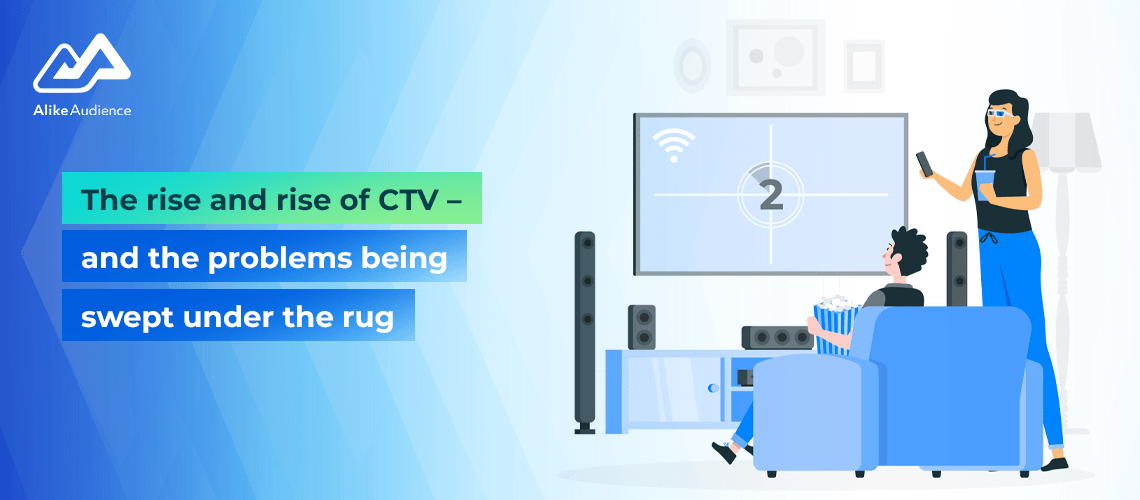Per GroupM’s latest mid-range forecasts, connected TV is set to capture $25.9 billion in marketing budgets this year, rising to $42.5 billion in 2028.
“CTV adoption, among consumers and advertisers, is growing rapidly, adding 10.4 per cent in ad revenue between 2023 and 2028 on a compound annual basis,” according to the WPP-owned firm’s This Year, Next Year report, published in June.
The company includes free ad-supported TV (FAST TV) and AVOD in its definitions of connected TV, but excludes YouTube. Others lump them all together.
Either way it’s a powerful growth story, eclipsed only by the rise of retail media. But CTV remains challenged on several key fronts: Fragmentation, standardisation, measurement, frequency capping, transparency and fraud.
Follow the money
According to DoubleVerify – which admittedly has a dog in the fight as it sells services that protect advertisers from bad actors – CTV bot fraud spiked 69 per cent last year. Per its research, across “5.5 trillion media transactions across over 1,000 customers in nearly 100 countries”, CTV campaigns without verification protections in place saw 11.2 percent of their ad budget creamed off.
It’s not just the plethora of questionable streaming apps and long-tail FAST TV channels that are proving susceptible to bad actors.
Despite GroupM’s category exclusion, Google clearly sees YouTube as CTV as it bids for a greater share of the TV ad pie. But in recent weeks the firm has reportedly been refunding advertisers after a three-year probe by Adalytics claimed it had repeatedly failed to meet its own video advertising standards on Youtube.
Google has refuted allegations that up to 80 percent of video ads had been misplaced, some on highly questionable third party sites rather than YouTube, but major advertisers and ad buying groups are riled.
“This is an unacceptable breach of trust by YouTube,” Joshua Lowcock, global chief media officer at IPG-owned UM Worldwide, told the Wall Street Journal. “Google must fix this and fully refund clients for any fraud and impressions that failed to meet Google’s own policies.”
But who’s counting?

CTV’s rise has brought with it currency fragmentation – advertisers are now grappling with a morass of competing numbers in terms of how many people are watching shows and therefore being exposed to ads.
It’s another area where Google is coming under pressure after telling advertisers it will start trading on its own co-viewing data as of January 2024. Effectively, that means Google will determine how many people are watching YouTube Select – its most popular channels – i.e. how many people it thinks are in the living room and therefore exposed to the ad.
TV networks have long applied a co-viewing multiplier – and some research suggests that premium CTV and linear TV have broadly similar overall co-viewing numbers, at just under 1.5 viewers per household per show. But these are usually provided by third party panels, such as those built over decades by Nielsen and others.
Some ad buyers fear Google’s move increases opacity – and, should its own co-viewing number prove to be higher than third party panel data, may serve to drive up YouTube inventory prices. But for now, Google is not forcing the issue.
“As of today, we believe we should give that choice to our customers, and so that is our intent, to continue to offer the Nielsen DAR guarantees,” Kate Alessi, managing director of YouTube/Video Global Solution, told Ad Age.
Frequency capping fails

Even big TV networks increasingly focusing on broadcast video on demand (BVOD) channels as linear audiences migrate, are struggling with frequency capping. That is, over-serving the same ad to the same people, wasting marketer budget, hurting user experience – and at worst creating brand antipathy.
Part of the problem is that ads are coming in from multiple sources – e.g. direct buys, programmatic guaranteed and the open web. So a viewer could watch an ad from Coca-Cola booked directly, followed by the same ad via an exchange in the same ad pod, back-to-back. And it does happen.
Plus, assets can be mislabelled by agencies – so the same ad could be called two different things. It goes into the system, gets placed and doesn’t raise a red flag on either the buy-side or the sell side. Human error extends to hitting the wrong setting on the DSP, or just omitting to apply a frequency cap. And on the buy-side, nobody wants to admit a mistake for fear of being made to pay for it.
Another key challenge is the lack of a single identifier in a post-cookie world. Some exchanges may not recognise specific CTV device IDs or may not handle them consistently. Then each network will use its own range of ad servers, DSPs and SSPs, creating a snowball effect.
Ask Sharper Questions
While some identity alternatives are being touted as solutions (such as The Trade Desk-led Unified ID 2.0) and technology-led approaches to solving the direct-programmatic booking disconnect (such as Magnite’s Unified Decisioning), nothing as yet has solved the frequency capping challenge.
Per a recent three-month Australian study by Adgile Media, some ads, particularly from larger brands such as FMCG, automotive and betting firms, are being played to the same person “well over 20 times per week”. However, when contacted, those brand advertisers said their delivery reports showed no such overkill occurring – because they are based on average frequency, not how the ads are distributed among different viewers.
“Ultimately, [tackling BVOD frequency capping is] down to advertisers to ensure that the right checks and balances are in place. Specifically, they need to ask for a frequency report showing impression volume by frequency band,” said the firm’s founder, Shaun Lohman. “Definitely don’t settle for any average frequency figure.”
However, per Lohman, the repeating ads seemed to stop once advertisers had been alerted – which suggests the media-agency-tech supply chain is capable of making improvements to the status quo.
Those that continue to help crack CTV’s most pressing issues may ultimately end up taking a larger share of the spoils. Either way, given CTV revenue growth forecasts, the market appears to be willing to put up with at least some level of discomfort for now.


